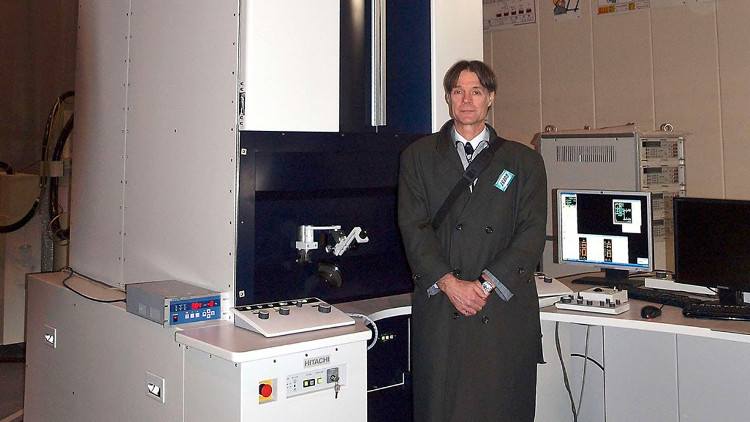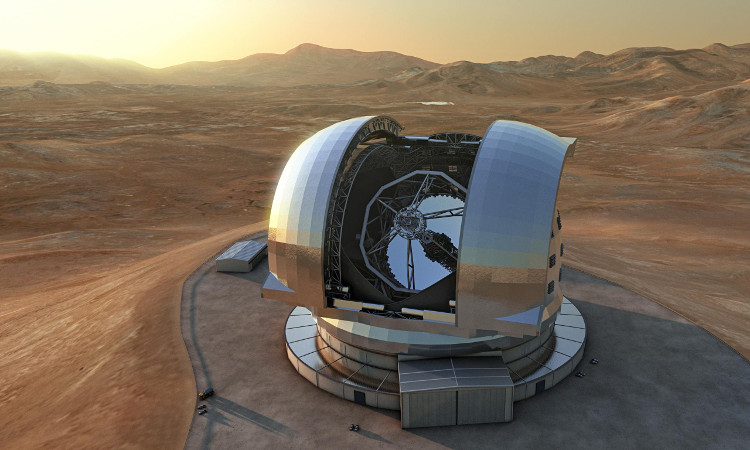Microscope and telescope, which is more
If the microscope has a very large magnification that allows us to see extremely small atoms, the telescope helps us see objects that are light years away from the universe. So which one is "stronger" ? Get the world's most powerful " microscope " and its equivalent in the telescope category, and take the mediator's eye to see which is "stronger" .
At 4.57 meters high and weighing 6.35 tons, Scanning Transmission Electron Holography Microscope (STEHM) is one of the most powerful microscopes in the world, allowing people to observe images at a resolution of 1 part 35 trillions of meters without processing. Rodney Herring, a researcher who is working on glasses at the University of Victoria lab, Canada proudly declares: "It is simply a very powerful machine with the ability to look better than human eyes 20 million times. " .

STEHM microscope - one of the most powerful microscopes in the world with the ability to fold 714 thousand times the human eye.
Developed by high-tech Hitachi Canada, STEHM will record images with electrons with a wavelength of 10 ^ -5 compared to light. Meanwhile, Herring said that the telescope cannot apply this approach because electrons from very far places will be deflected or absorbed before reaching Earth: "Electrons do not reach us but light This is one of the reasons why we look at small things easier than watching big things. "
On the other hand, microscopic scientists can also manipulate their specimens. Using a pair of lasers to illuminate the specimen could help to improve the resolution of a normal microscope from 300nm to 10nm, according to optical physicist Mark Neil at Imperial College London. For electron microscopes such as STEHM, the level of improvement is even higher, bringing down to the atomic scale.

Large telescope in Europe with 0.01 corner resolution, which is 6000 times the human eye.
Meanwhile it is difficult to find the same measurement for a giant telescope. Instead of being interested in linear resolution, astronomers focus more on angular resolution, which is measured in units of seconds (1 / 3.600 degrees). For example, the Hubble Space Telescope can capture images at a resolution of 0.1 arc seconds. And the European telescope (European Extremely Large Telescope) currently being built on the summit of Chile is expected to have angular resolution of up to 0.01 seconds or more.
In order to form a comparison between a telescope and a microscope, we should think about them in the sense that "human eyes cannot do it". Professor Neil said the vision of an average person is capable of seeing objects at a linear resolution of 25,000 nm and an angular resolution of about 60 arcseconds. So the best microscope will take our observation ability from 25,000nm down to 0.035nm, which means an improvement of about 714,000 times. Meanwhile, the best telescope will push our vision from 60 seconds to 0.01 seconds, which is about 6000 times more.
- The birth of the microscope
- High Speed Microscope
- Why does the microscope output monochrome images?
- Google created a augmented reality microscope capable of detecting cancer
- Foldscope - paper microscope to diagnose malaria
- Australia makes 20 times more powerful microscopes today
- Polaris neutron microscope: Performing faster measurements
- Super light microscope
- Scientists create three-dimensional microscopes to find aliens
- Phone microscope recognizes disease characteristics
- Unbelievable life colors under a microscope frame
- China will build the second giant telescope to find aliens
 'Fine laughs' - Scary and painful torture in ancient times
'Fine laughs' - Scary and painful torture in ancient times The sequence of numbers 142857 of the Egyptian pyramids is known as the strangest number in the world - Why?
The sequence of numbers 142857 of the Egyptian pyramids is known as the strangest number in the world - Why? History of the iron
History of the iron What is alum?
What is alum?